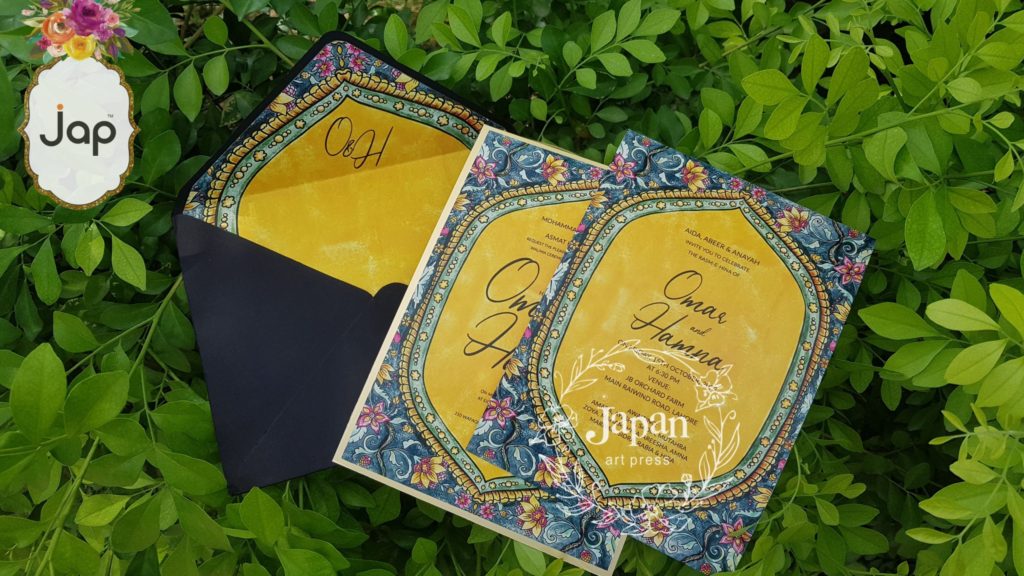Muslim weddings are exclusive in many ways including their ardent traditional values. Like any other wedding, wedding cards play a central role in Islamic Weddings too. Also known as Shadi Cards. These Shadi Cards stand prominent because of numerous factors like design, layout and phrasings.
In this article, we will be discussing the traditional pattern of wedding invitations in detail. The Muslim Shadi cards contain the following detail
- Opening
- Introduction of the inviter
- Marriage Announcement
- Request to join
- Venue Detail
- Inviter’s address and family introduction
- Introduction of young male members
Opening
Every Muslim Shadi card has a very traditional opening. And the format remains the same whether the wedding cards are in Urdu or English. It opens with Bismillah and a quote based on a prophetic saying. The common use of Quranic verses in Pakistani wedding invitations marks devotion to Islamic teachings. It also indicates that the name of Allah is to bring blessings to wed couples.
Introduction of the inviter
This appears soon after opening. Wedding invitations are sent by couples’ families separately. Generally, the name of the Head of the family is written on the top with the name of the groom or bride. And it is highlighted in bold and large font.
Marriage Announcement
This part is to announce the wedding. In which names of the couple along with their parents are mentioned.
Request to join
This is one of the vital parts of Shadi Cards in which the invitee is requested warmly to join the auspicious ceremony.
Venue Detail
This part of Wedding Invitations is greatly taken care of. It gives detail about the location, day and dates of the event. In the case of more than one ceremony, details are given separately to avoid any confusion.
Inviter’s address and family introduction
It is on the left side of the Wedding Cards. This segment is called VIP or Looking Forward. It includes all the maternal and paternal heads of the families’ names, mostly men. This indicates the well-bonded family network in Muslim families.
Introduction of young male members
This is one of the most interesting segments of Wedding Invitations. This segment is named RSVP. It includes the name of young boys of the families who will be receiving the guests along with their elders.
Final Thoughts
In Muslim culture, Shadi Cards can be trendy but will always have a similar way of inviting people. Cards are full of information about extended family members. It indicated how well Muslim traditional families are linked to each other. For no particular reason, Women’s names are hardly mentioned. Some cards carry invitations for the whole family members whereas some cards carry invitations for a few people. Financial status can be predicted by the design and size of the invitation.
[quads id=4]

